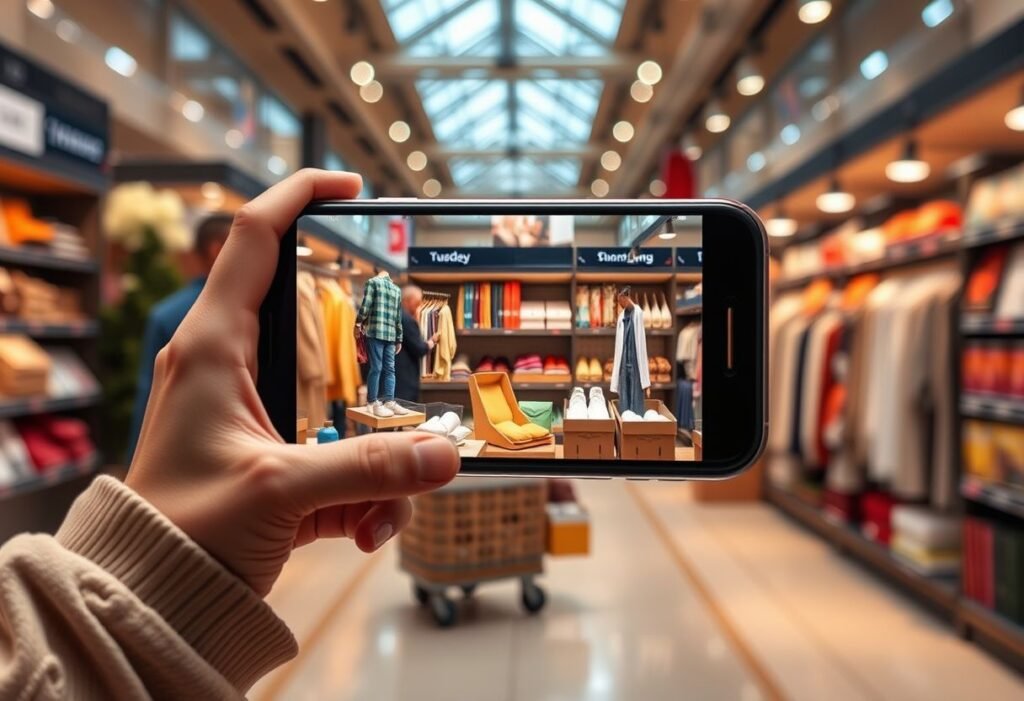The integration of Augmented Reality (AR) into e-commerce is transforming the shopping experience, making it more immersive and interactive. This innovation is crucial for businesses looking to engage customers in new ways and enhance their overall shopping journey.
The Role of Augmented Reality in E-Commerce
Augmented Reality is bridging the gap between the digital and physical shopping experiences. By superimposing digital elements onto the real world, AR allows customers to visualize products in their own environment before making a purchase. This capability enhances customer confidence, as they can see how furniture fits in their living room or how clothes look on them virtually. Such interactive engagement not only boosts customer satisfaction but also reduces product return rates, significantly impacting businesses’ bottom lines.
Enhancing Customer Experience Through AR
The user experience is paramount in e-commerce, and AR provides a unique method to enhance it. Customizing a shopper’s journey with AR applications offers personalized product recommendations based on user preferences and past behavior. Furthermore, interactive features such as virtual try-ons for apparel and beauty products can lead to increased conversion rates. Engaging customers in a visually appealing way through AR can distinguish a brand from its competitors, fostering loyalty and repeat business.
Increasing Engagement with Interactive Features
Interactive AR features, such as 3D product models, captivate consumers’ attention. Shoppers can manipulate these models—zooming in, rotating, and examining details. This level of interaction enhances the decision-making process as it provides an in-depth understanding of the product’s features. For example, car manufacturers offer virtual showrooms allowing potential buyers to explore different models in a 360-degree view, significantly improving the likelihood of purchase.
AR’s Impact on Marketing Strategies
With AR capabilities, marketing strategies evolve into more interactive and engaging campaigns. Brands leverage AR in advertisements by allowing users to scan a code and view content directly through their devices. This innovative approach not only enhances brand recall but also encourages sharing among consumers. For instance, furniture retailers can use AR to allow customers to visualize how a piece might look in their home, making the advertisement far more impactful versus traditional marketing.
Future Trends in E-Commerce and AR
The future of e-commerce lies heavily in the advancement of AR technologies. As consumer expectations continue to rise, businesses must integrate new innovations to meet these demands. Technologies such as AR face recognition and more personalized experiences will likely become commonplace. By investing in these innovations, e-commerce businesses can stay ahead of the curve and cater to a tech-savvy audience seeking enhanced shopping experiences.
Conclusion of AR in E-Commerce
In conclusion, the impact of Augmented Reality on e-commerce cannot be overstated. The integration of AR technologies into online shopping not only improves customer experience but also leads to higher engagement, reduced returns, and increased loyalty. As businesses continue to innovate and expand their AR capabilities, the potential benefits for both customers and companies are endless. Future developments will only enhance these experiences further, encouraging ongoing growth in the digital marketplace. Businesses must adapt and integrate AR into their e-commerce platforms to remain competitive.
This content is for informational purposes only and should not be considered as professional advice.





















